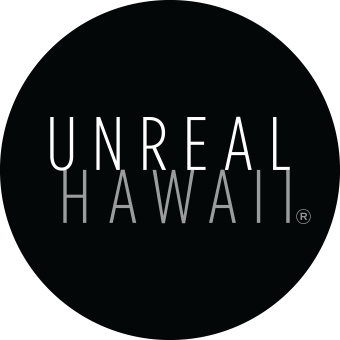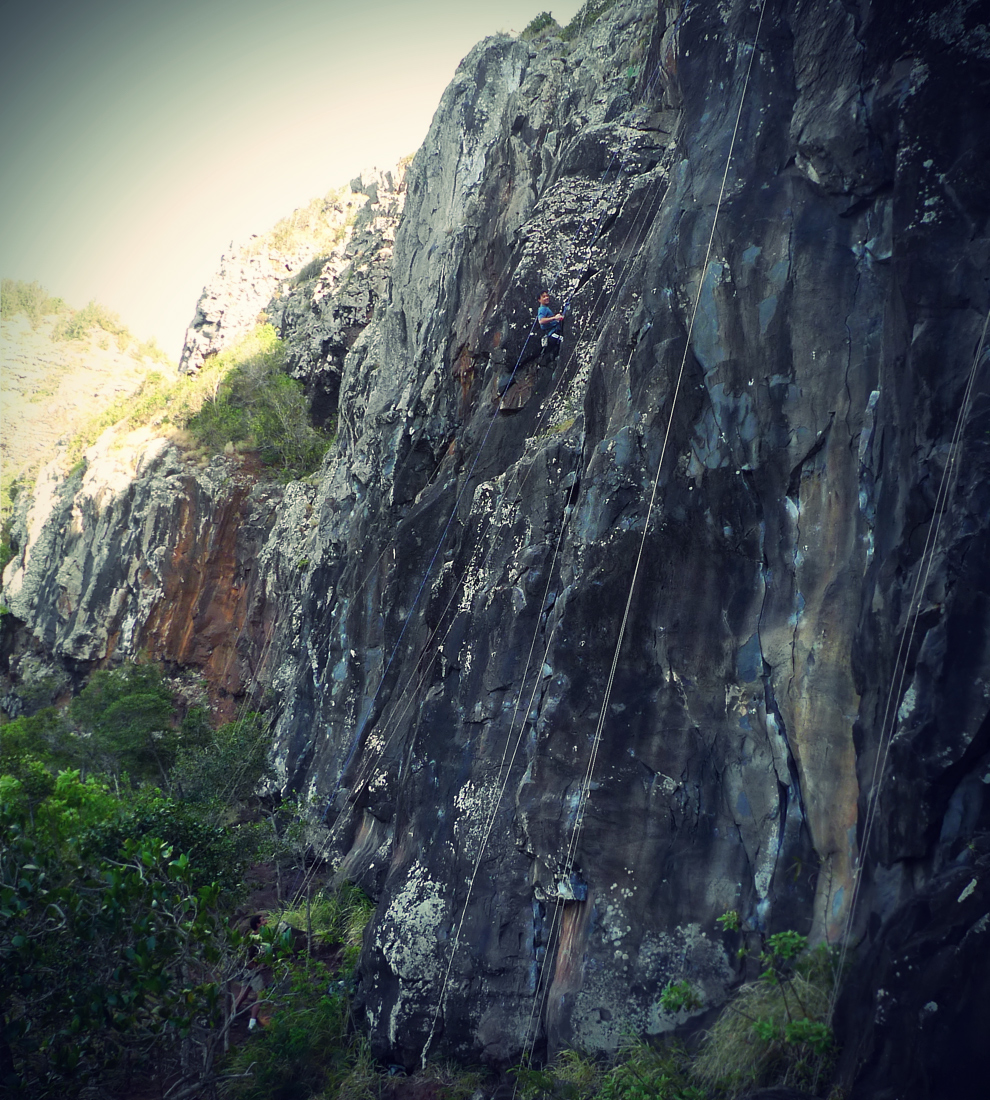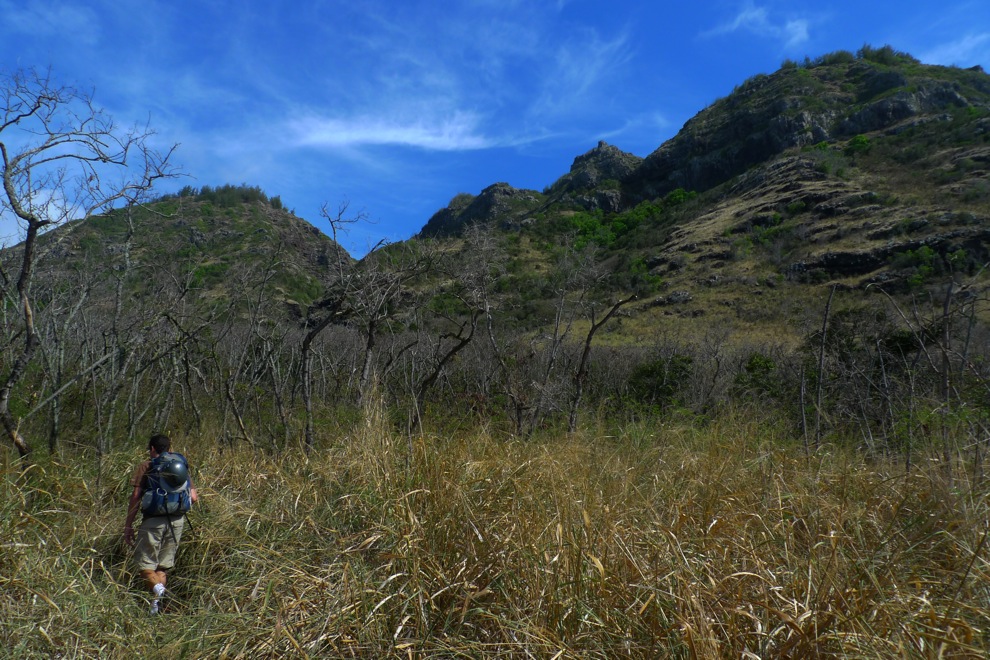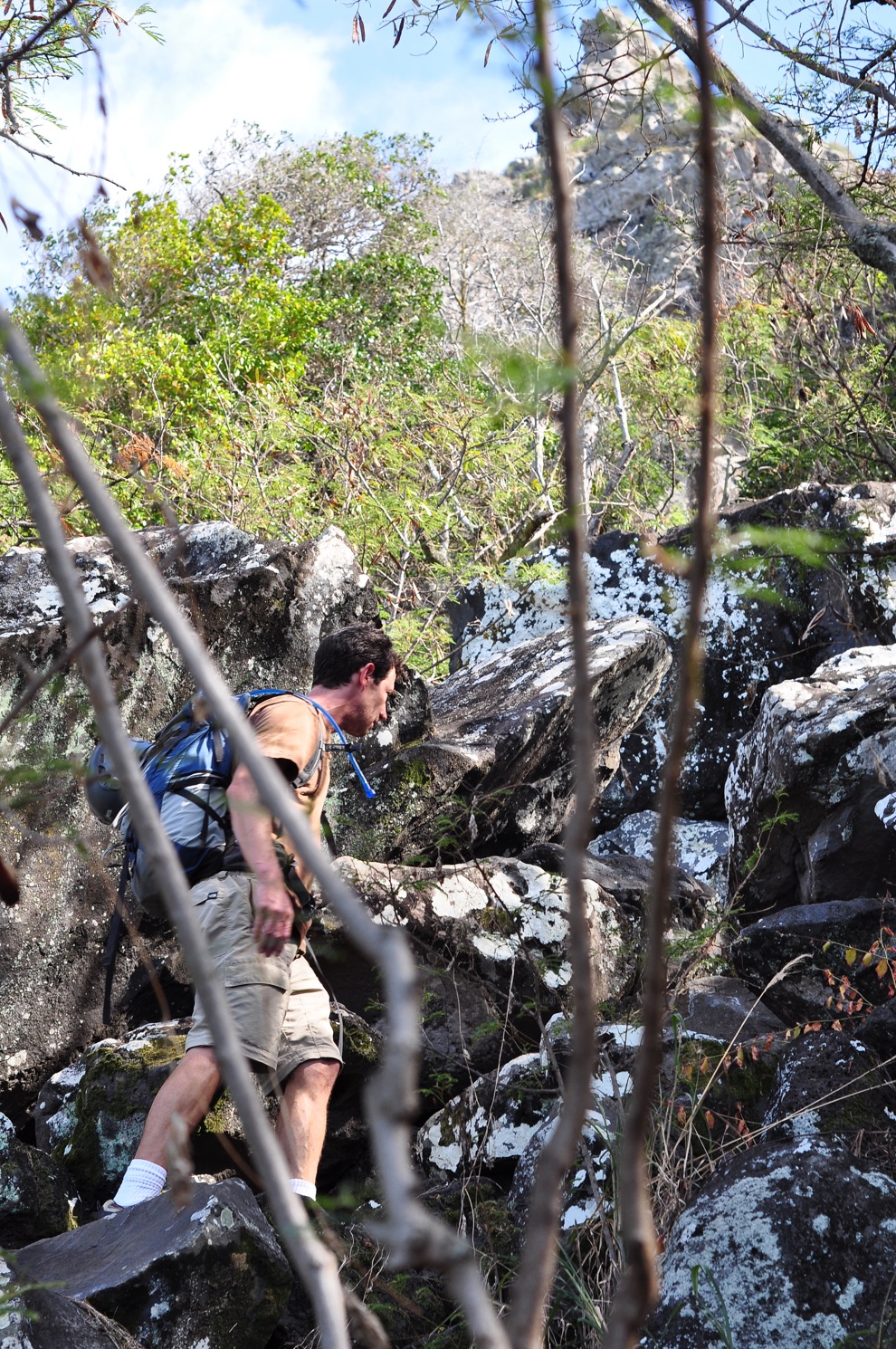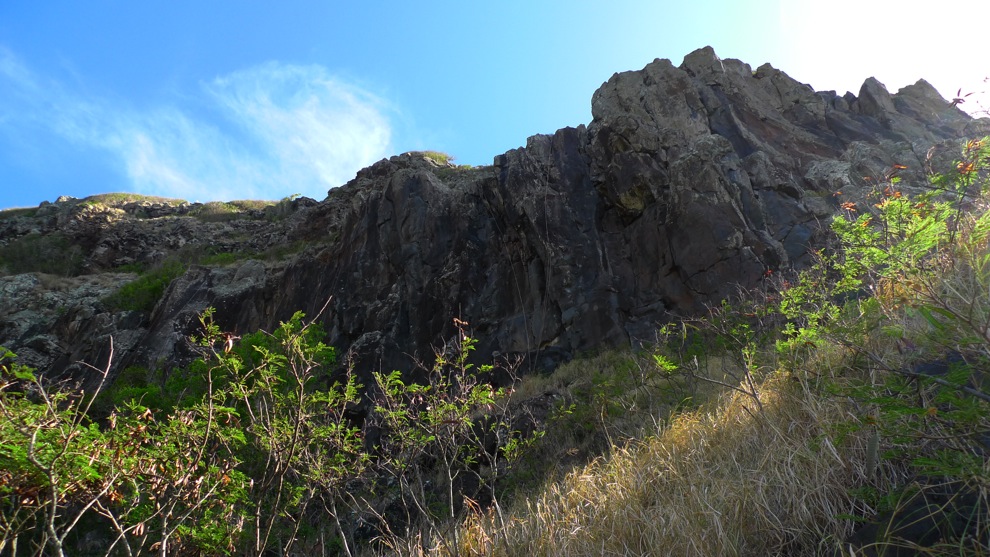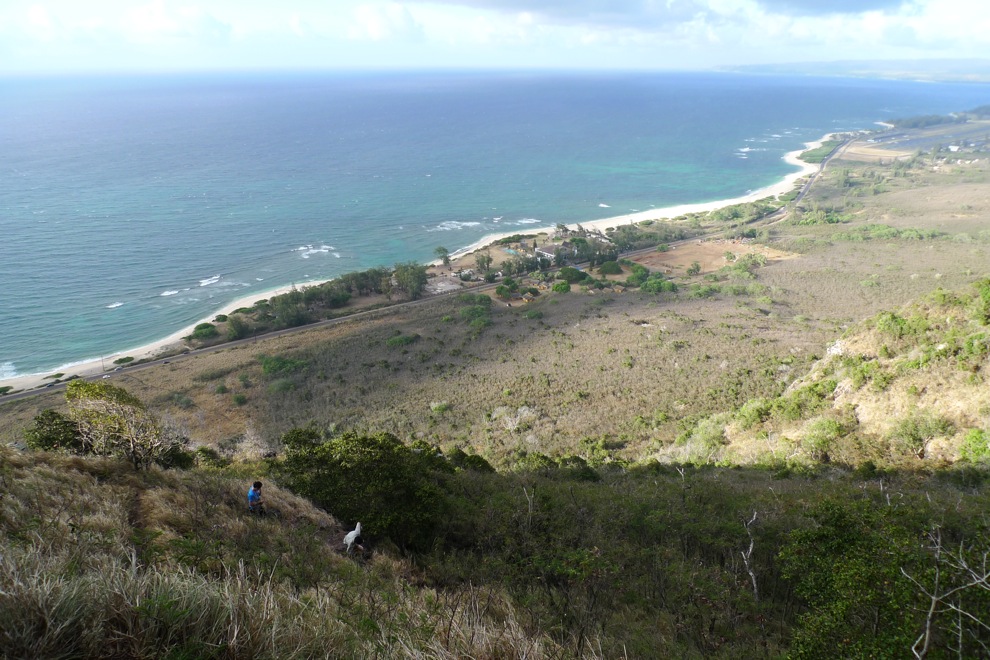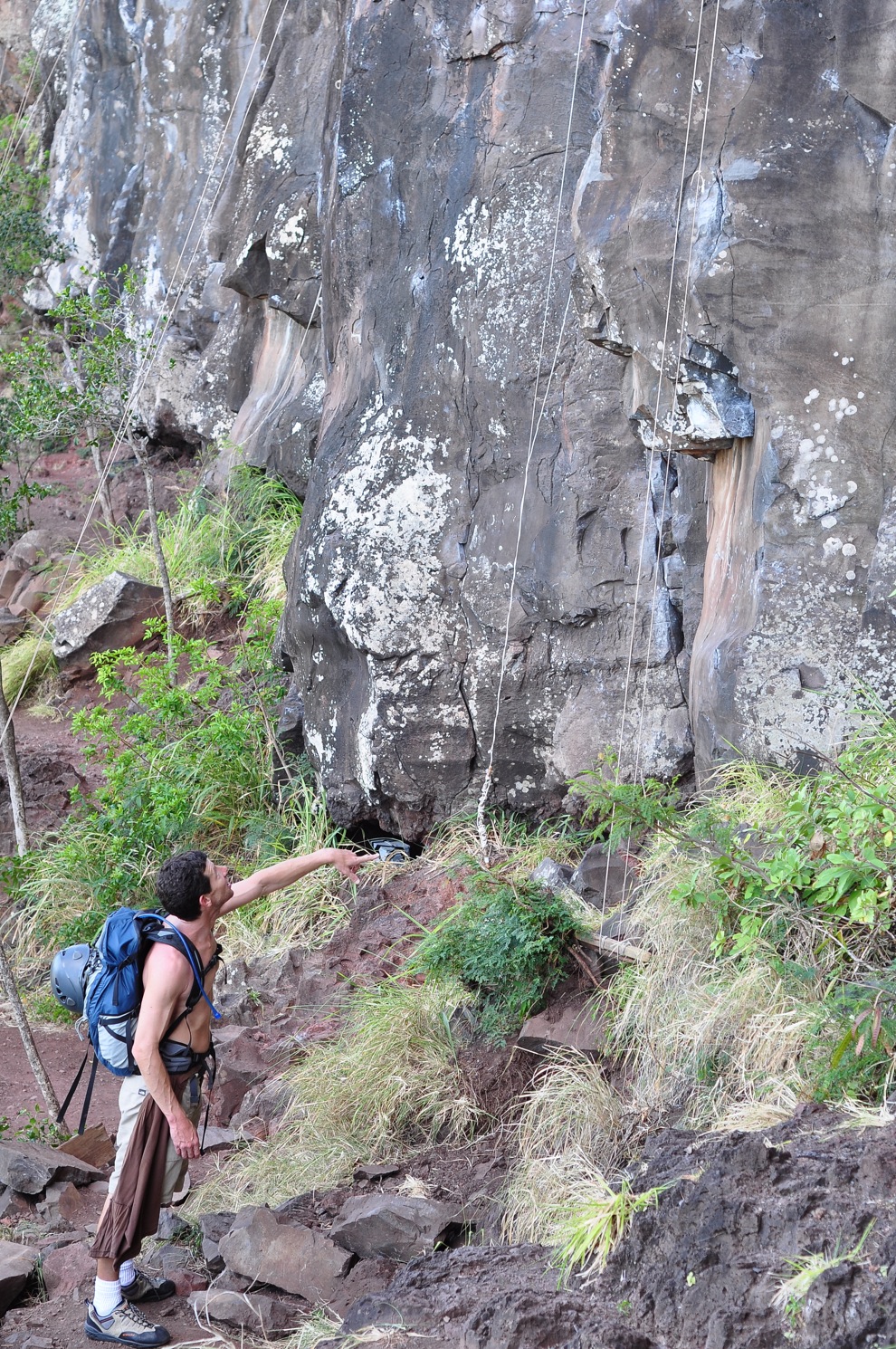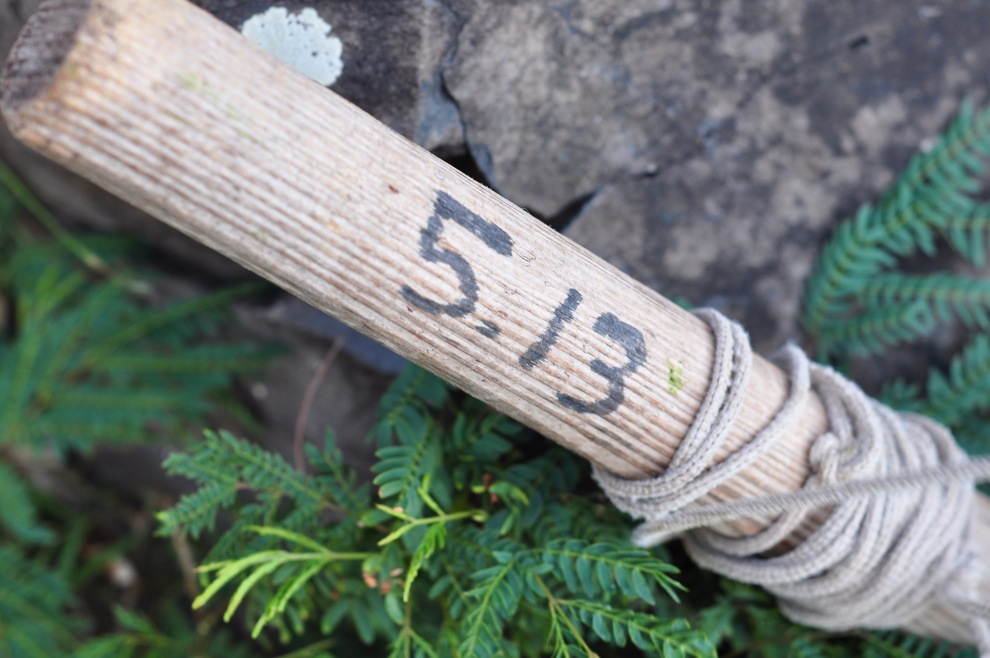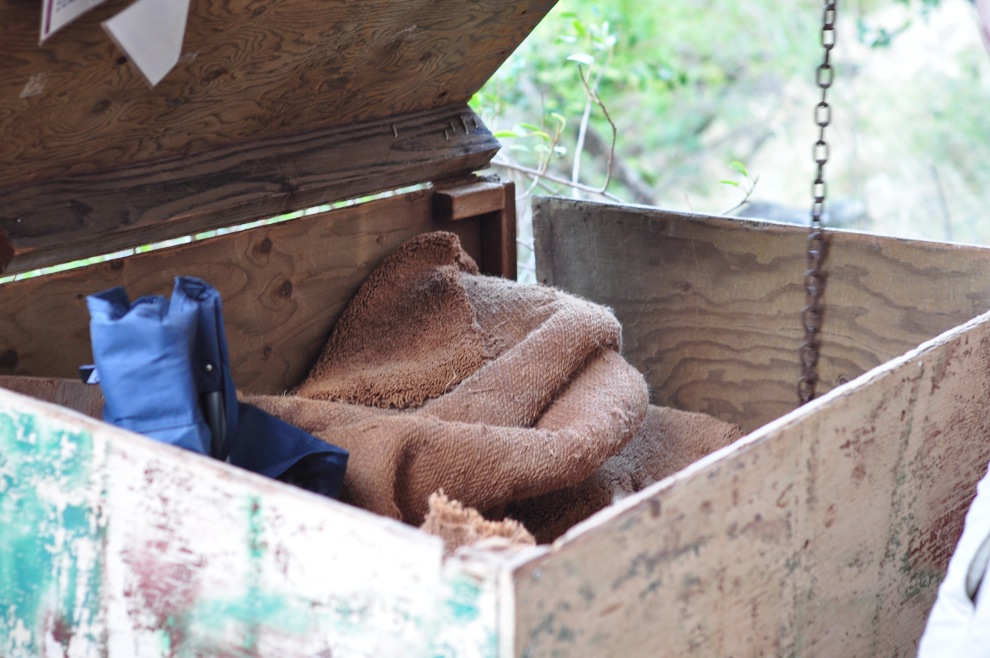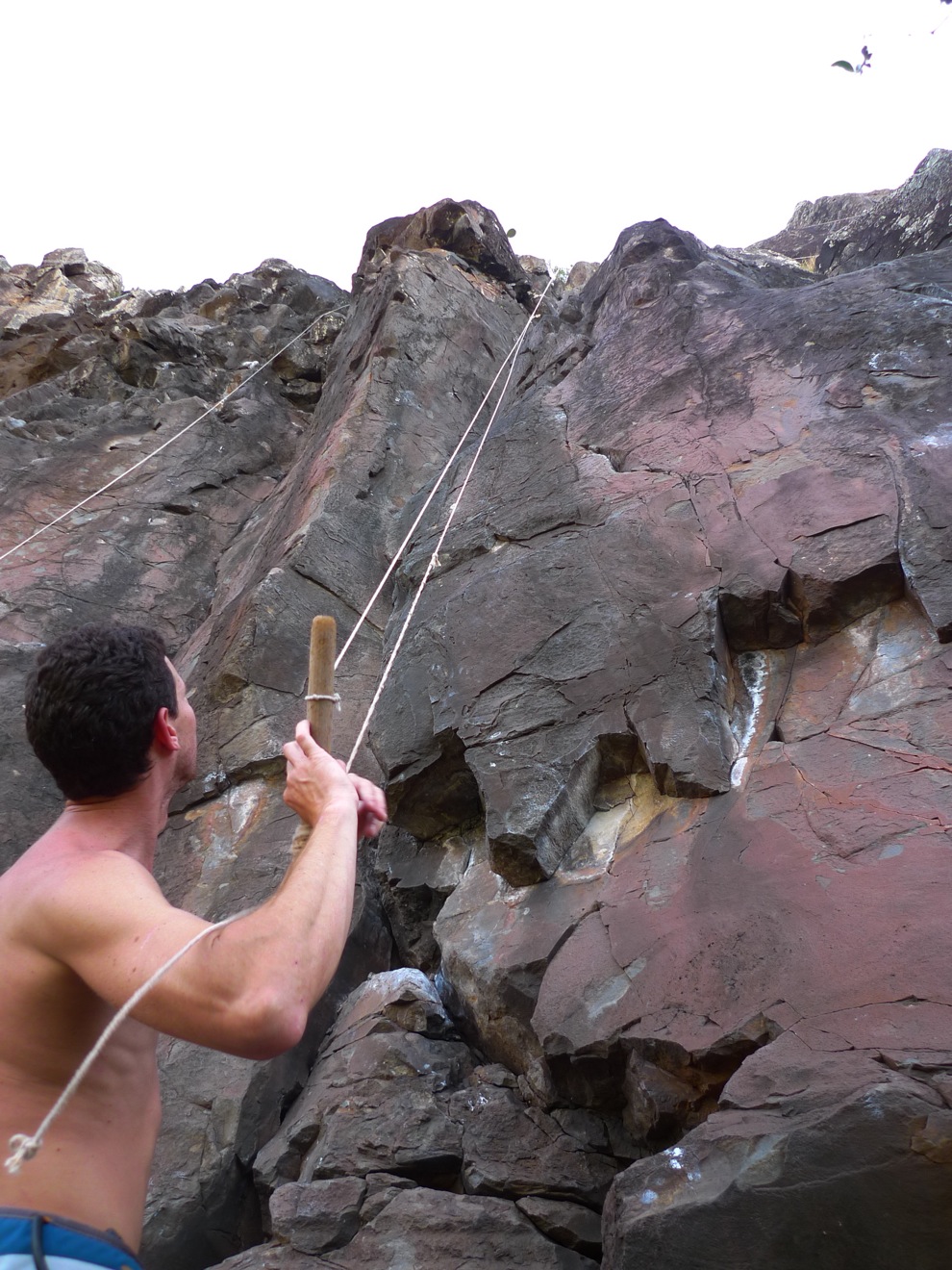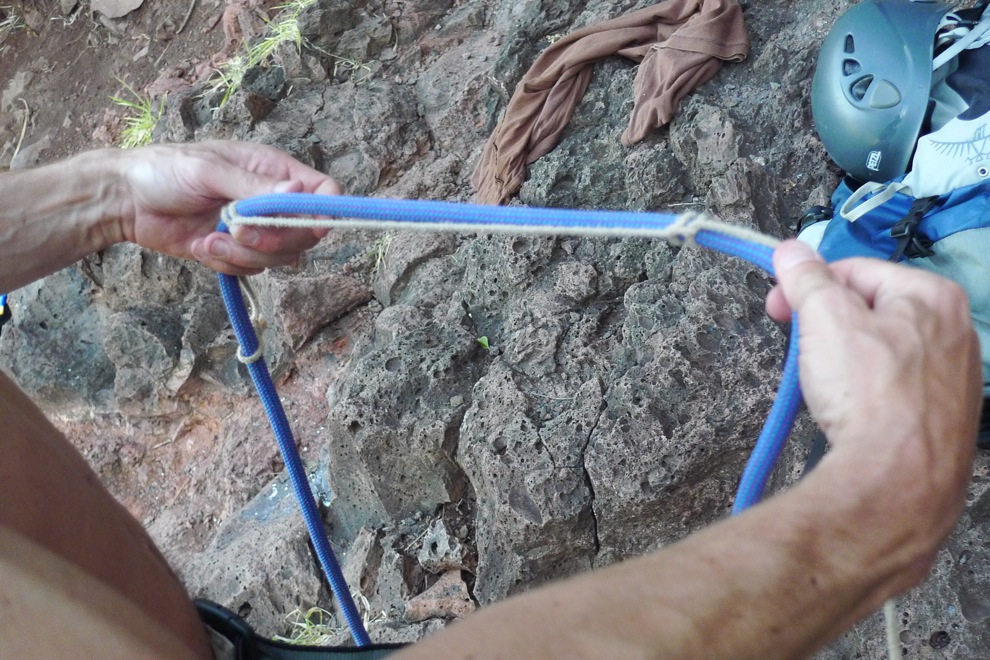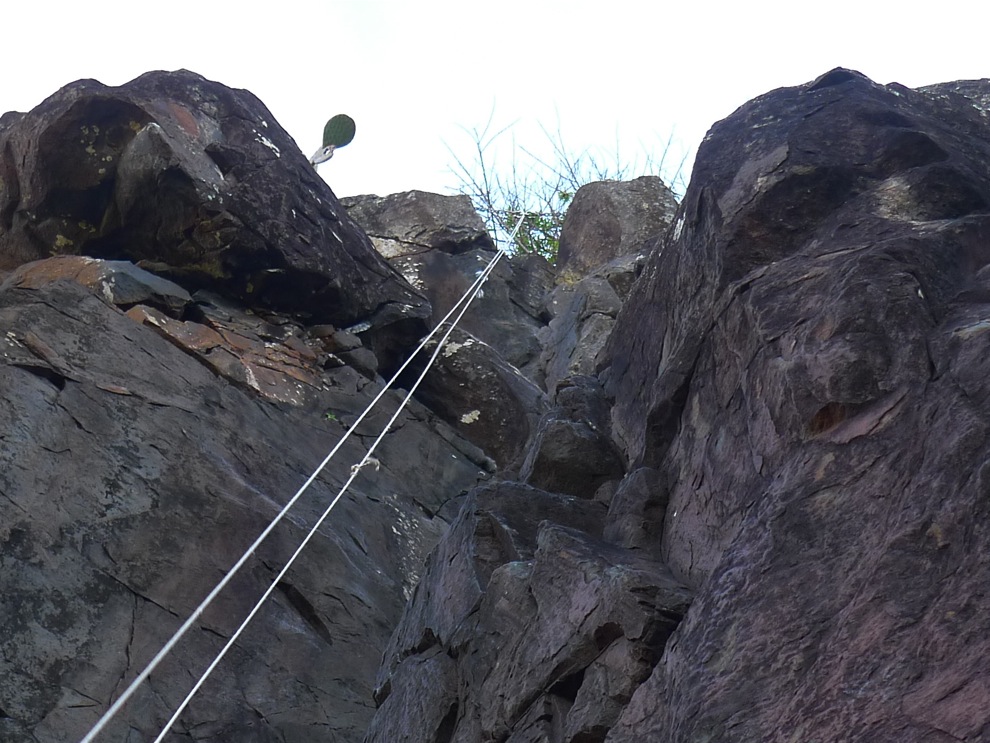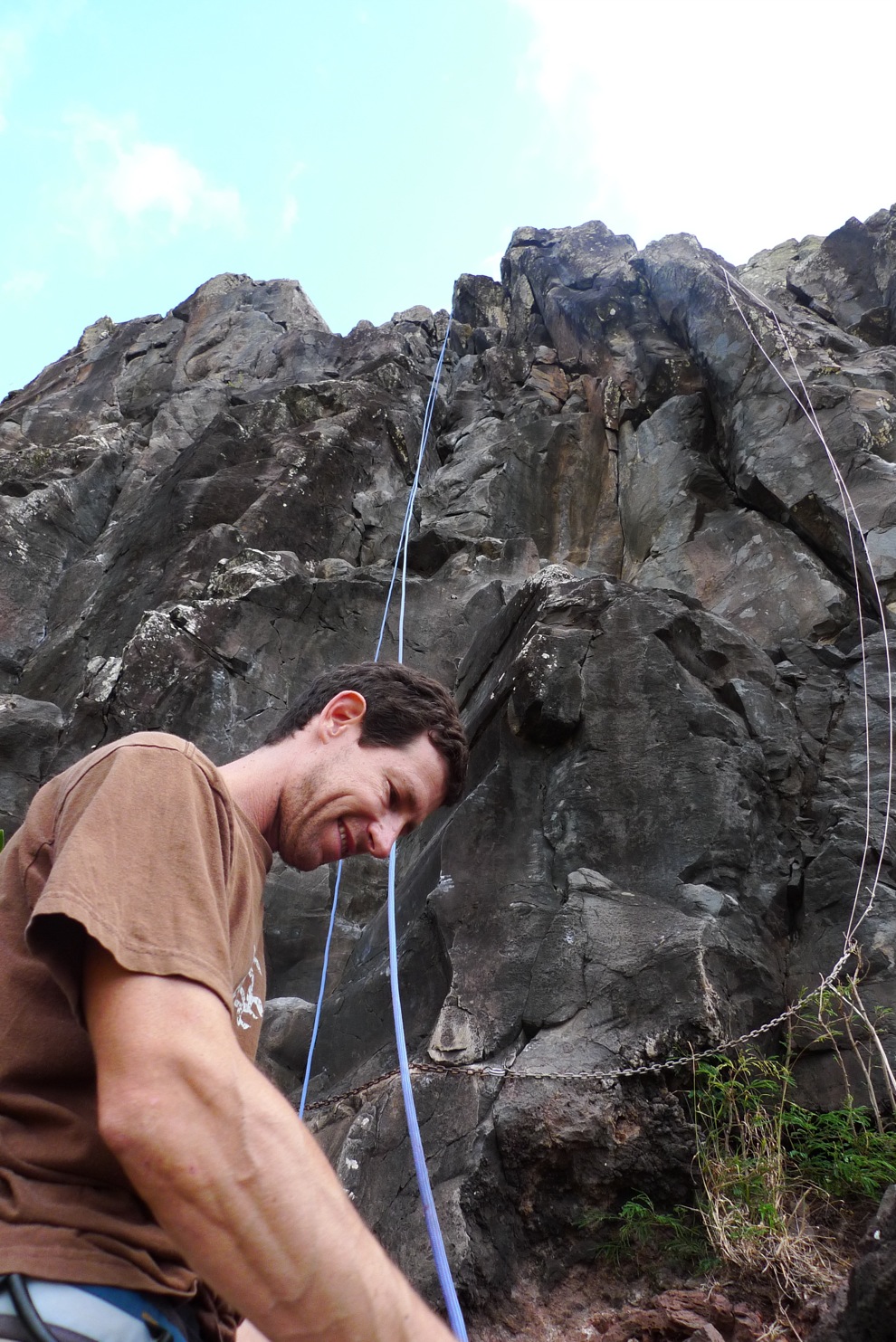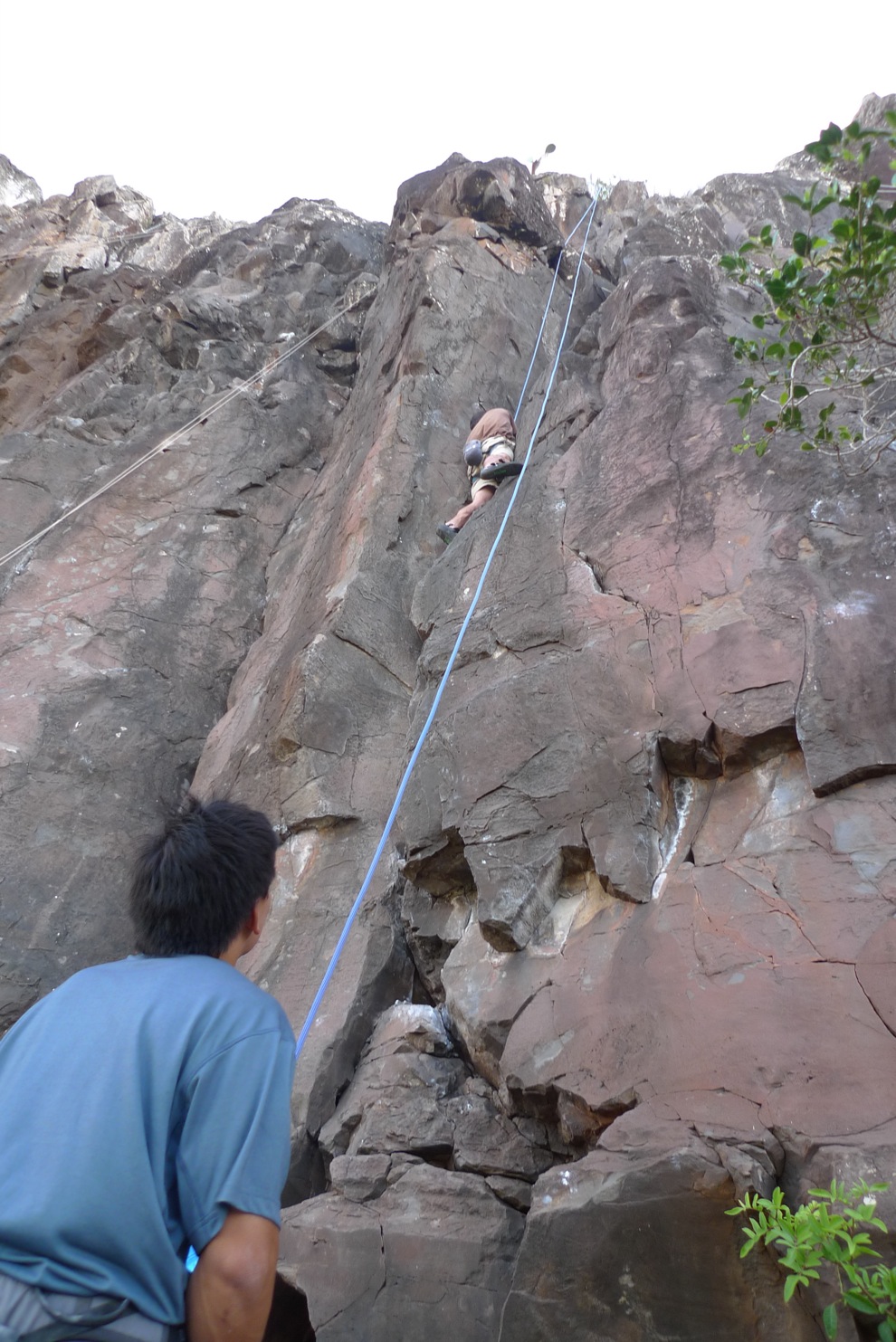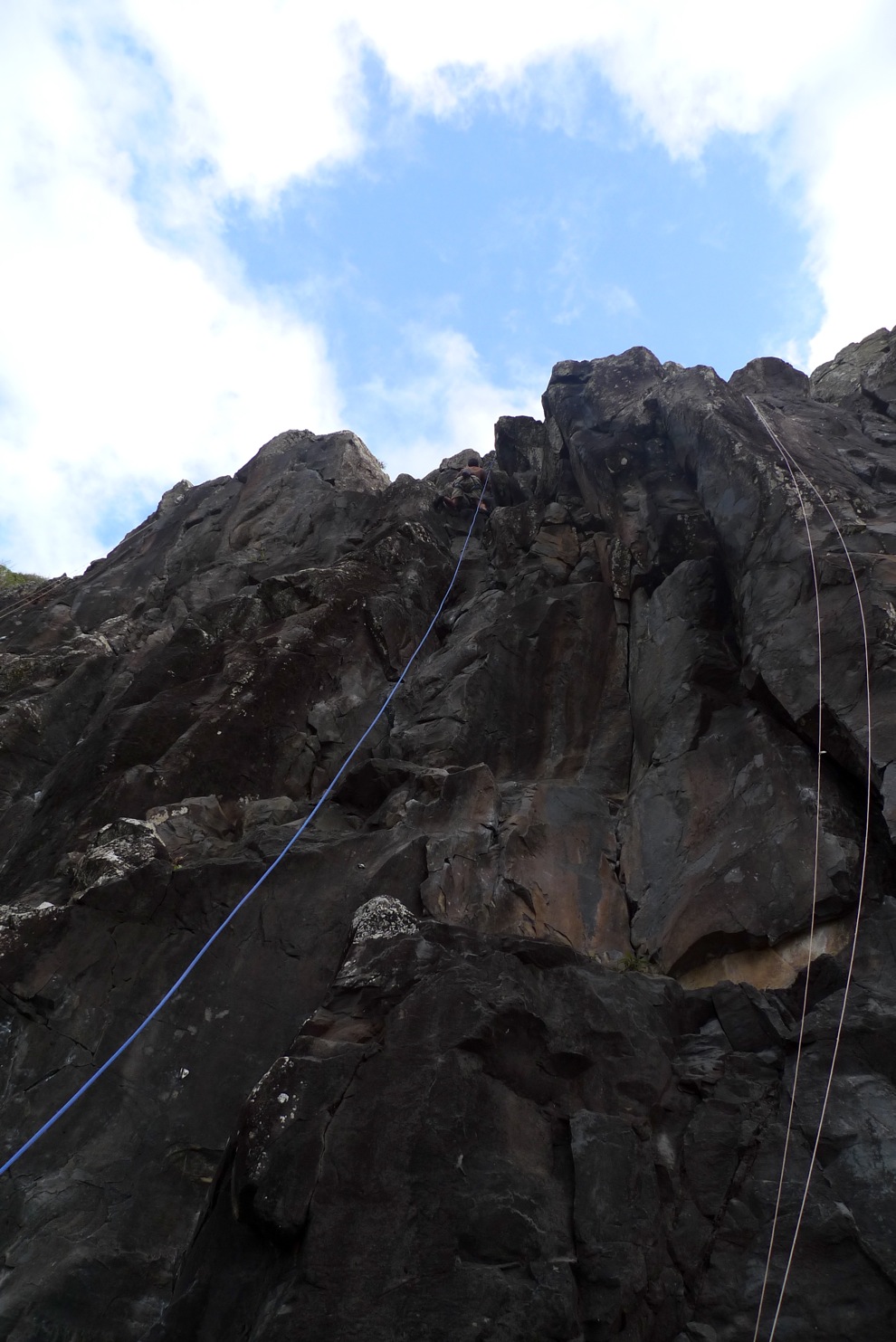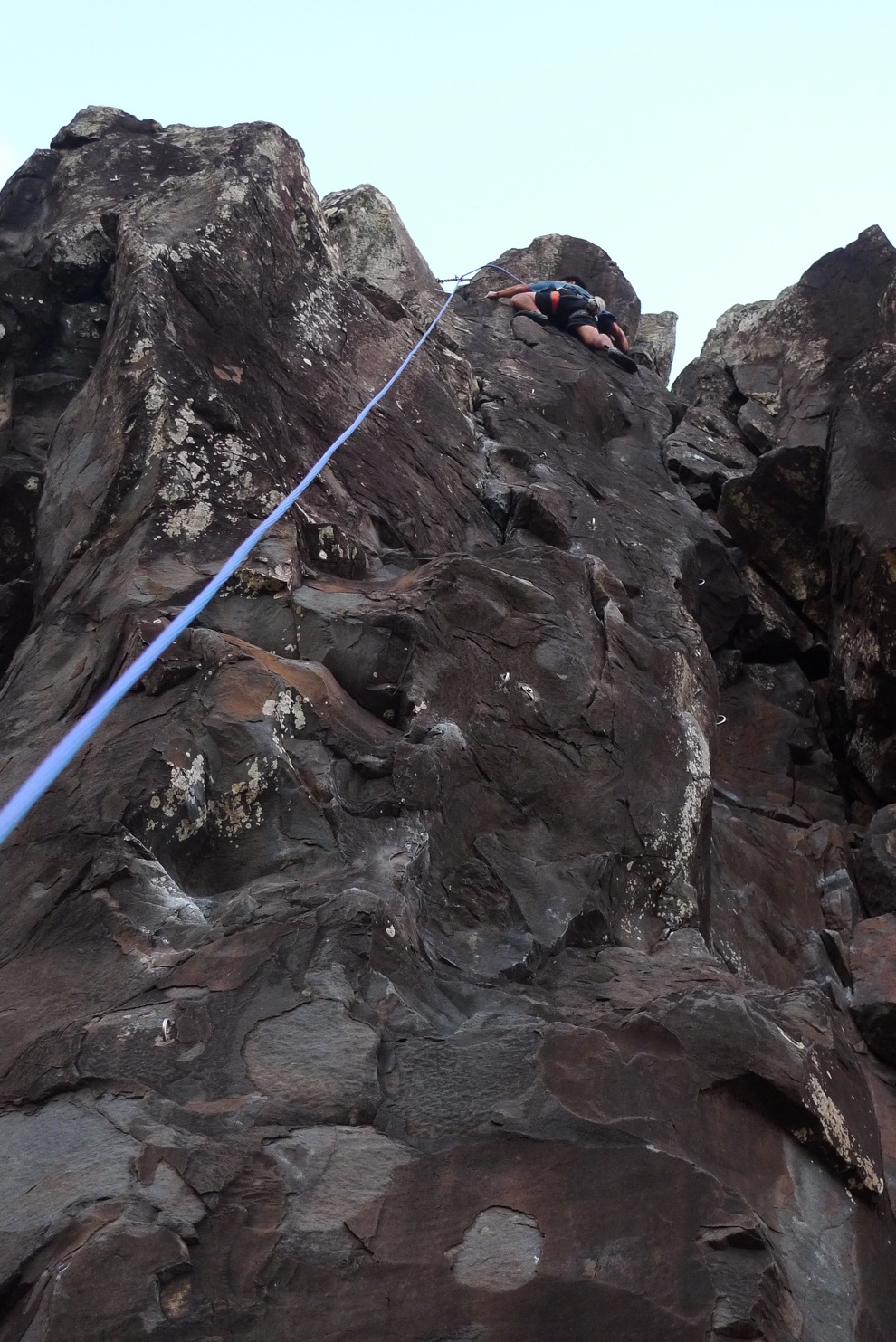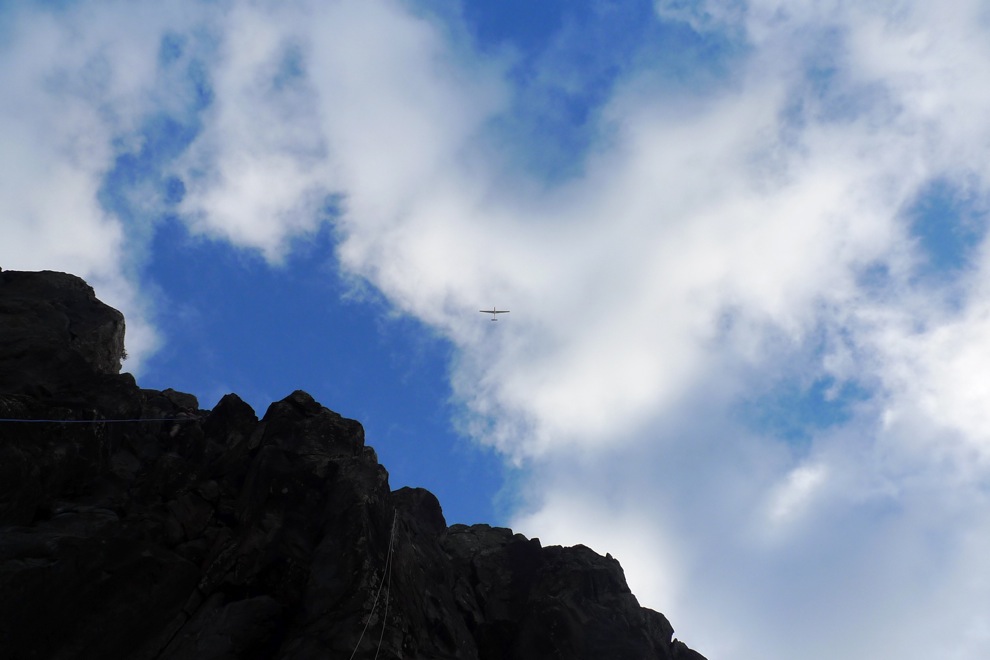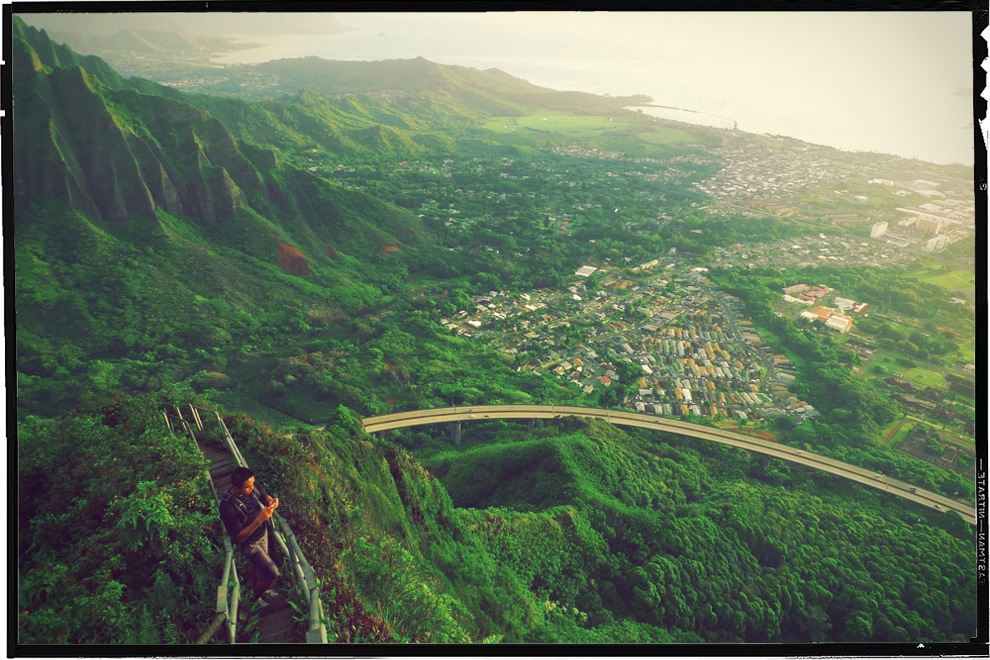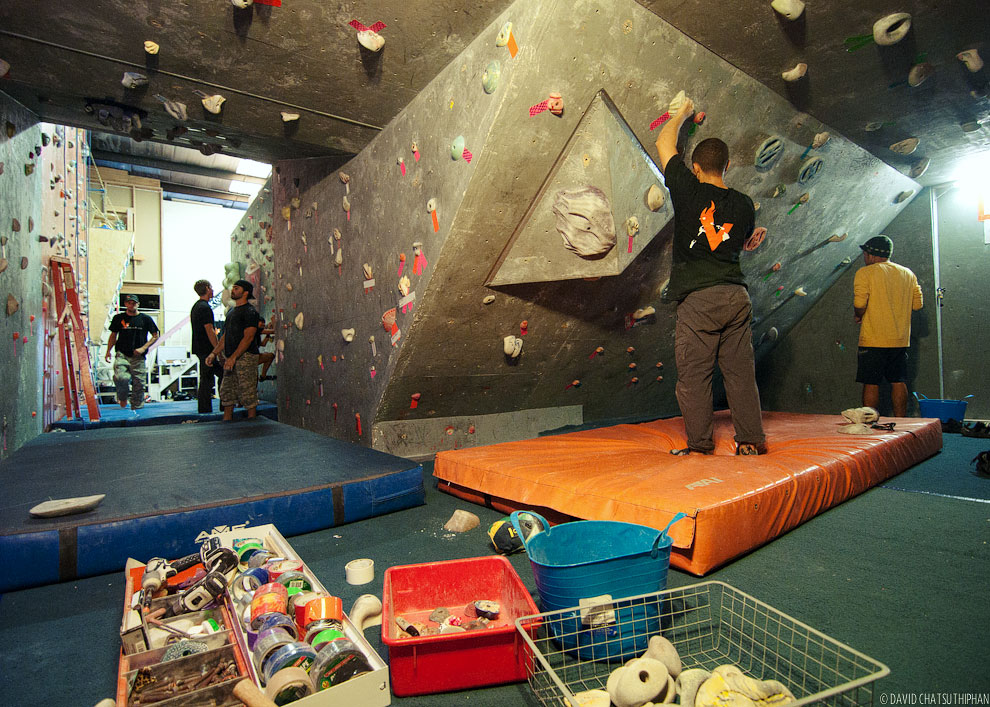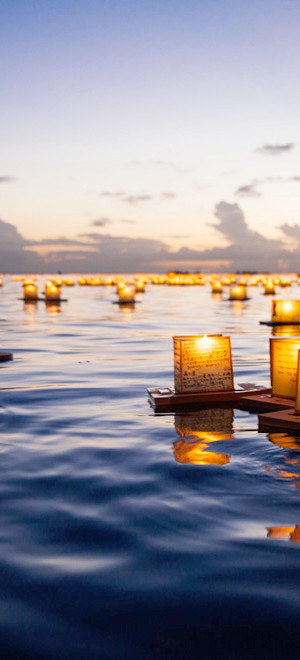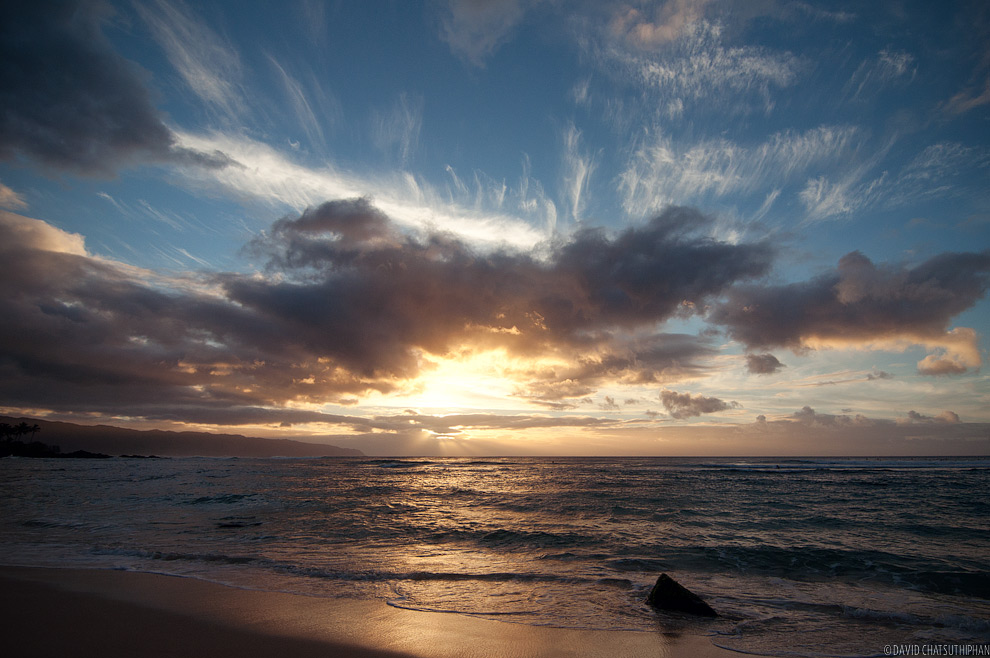Halfway up a my first climb on the Main Wall.
One of the great things about living on an island is that everything is close by. After a mellow South Shore surf session in the morning and a Kua’Aina burger for lunch, there was plenty of time left in the day to go climb with Joe (ClimbingEnthusiast.com / @Surfer9Joe) in the North Shore.
There’s a town up there called Mokule’ia. It’s known for a few things: an amazing hike to Kaena Point; the set for the “Others” camp from Lost (which is really a camp for kids) is there; and, it’s home to the best top-rope climbing spot on Oahu. That would be the Mokule’ia Crag or, the Moke.
At the Moke there are a few walls to climb on but the main spot, with around 50 routes, is appropriately called the “Main Wall.” This is where we climbed.
I’m a newbie to climbing and this trip was my first time top-roping outdoors. The only experience I’ve had so far has been at our local climbing gym. The words I’d use the describe climbing the Moke are: challenging, stressful, tiring and completely rewarding.
UPDATE 7/24/2012: Due to a recent injury the Mokuleia Crag has been closed by the state indefinitely.
UPDATE 3/8/2015: The Mokule’ia Crag has been reopened, but you must join the Hawaii Climbing Commission (HCC). This puts you under the HCC permit with the state and allows you to climb legally. Membership is free. You can sign up at www.hiclimb.org.
To get to the Moke you park along the beach. From the car, there’s a 30 minute hike up to the wall so bring some hiking or approach shoes.
The hike is a bit of an incline, and since you’re carrying gear, you may want to take breaks so you don’t wear out your legs. Those will come in handy later.
Here’s the Main Wall. Each of those strings you see on there represent a route to the top.
Once you get to the top, you can turn around and take in the view while you rest up for your first climb. Those two people hiking down are Patrick, an avid climber from Vancouver and @GypsyRaven, an avid Twitterer in Honolulu. They were just cruising by and Patrick ended up helping me with my belay technique and taking some great pictures for us. It’s amazing how many cool people you meet when you’re outdoors hiking or climbing.
There’s a lot to choose from here. At the bottom of each string there’s a rating that tells you how difficult the route is.
So, 5.13 is very difficult. We’ll save this one for later.
Once you pick your route, you can hit this convenient storage box and grab a rug. You’ll place your rope on the rug to keep it clean. There’s supposed to be a paper in here that lists all the route names and their ratings in here too but it must have been misplaced.
Now it’s time to set the top-rope. That’s what these strings are for.
You just tie the string to your rope and then use the string to pull your rope up through an anchor at the top.
This chain is the anchor and keeps you from dying if you were to happen to slip while climbing. I like this chain.
The chain also marks the end of the route. Touch the chain and you’ve completed the climb.
Basically, you just keep pulling the rope until it’s all the way back down and you’re good to go.
Now harness up and start climbing.
The routes go up as high as 90 feet over here. When you’re that high up and holding on by your finger tips and a small toe hold, it’s a rush.
This move was rather sketchy. I’ll admit it, I fell here and had to use the rope to get across this traverse.
Silent gliders fly above.
We got to the Main Wall at around 3:30. I got in three climbs and Joe got in four before we ran out of light. (It’s summer right now and the sun sets around 7:15.) When we hiked back to the car it was almost pitch dark so it was a good thing we brought flashlights. Joe actually had a headlamp which seemed to be a shade more effective than my keychain LED light. I might look into getting one of those.
See also:
View Mokule'ia Crag in a larger map
